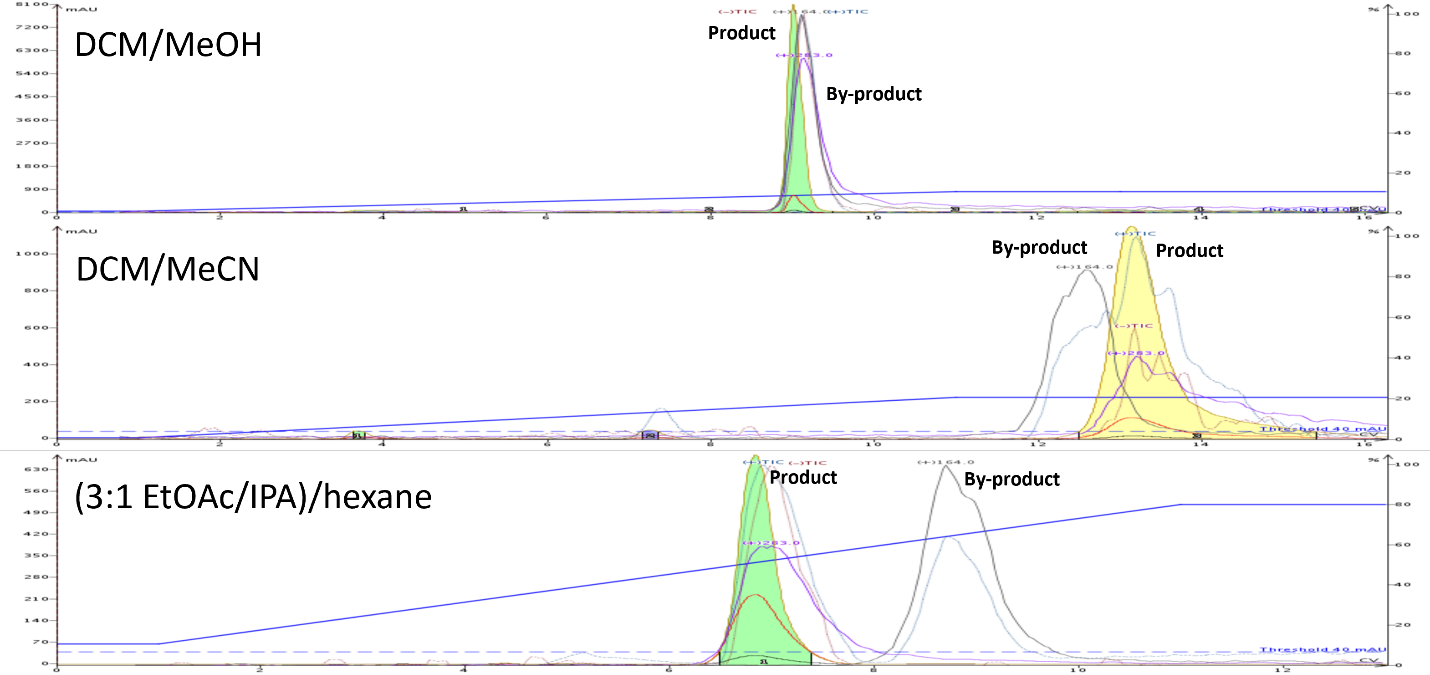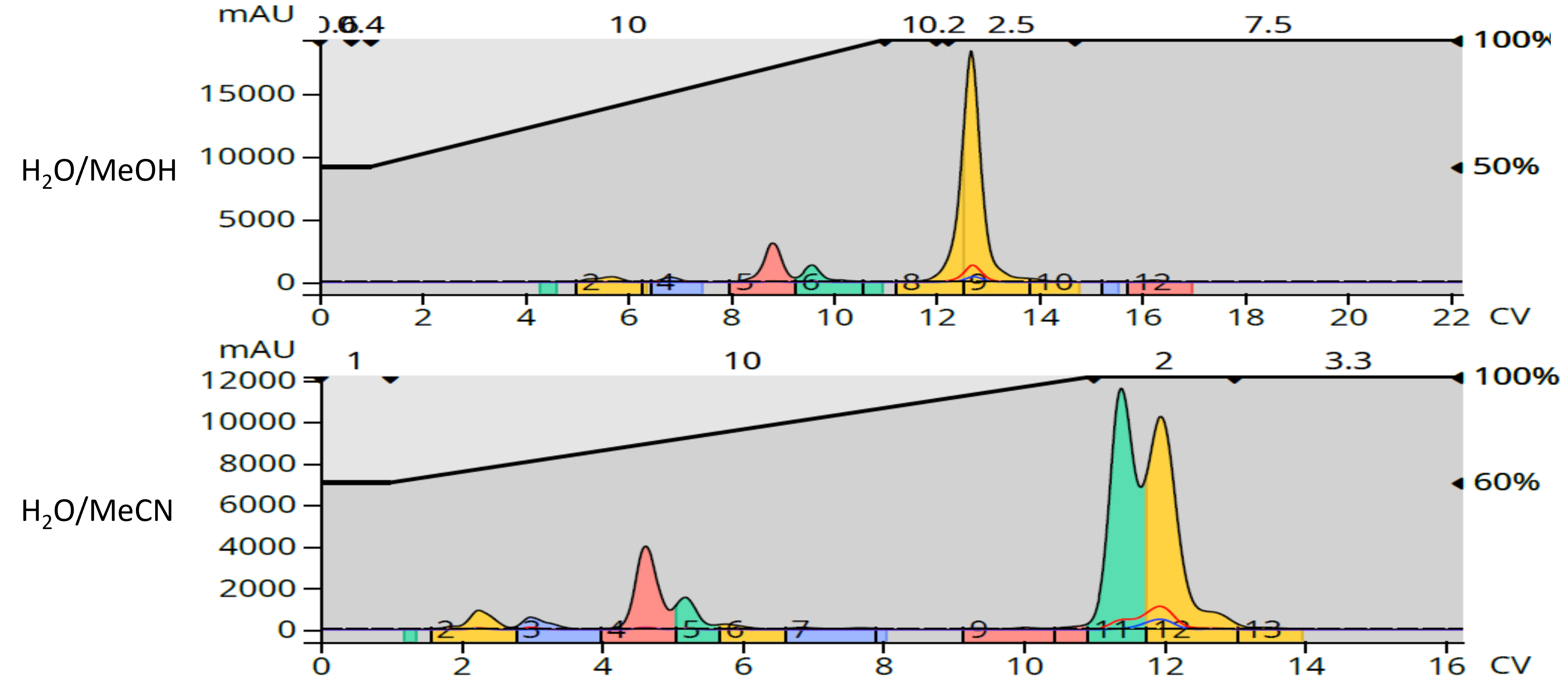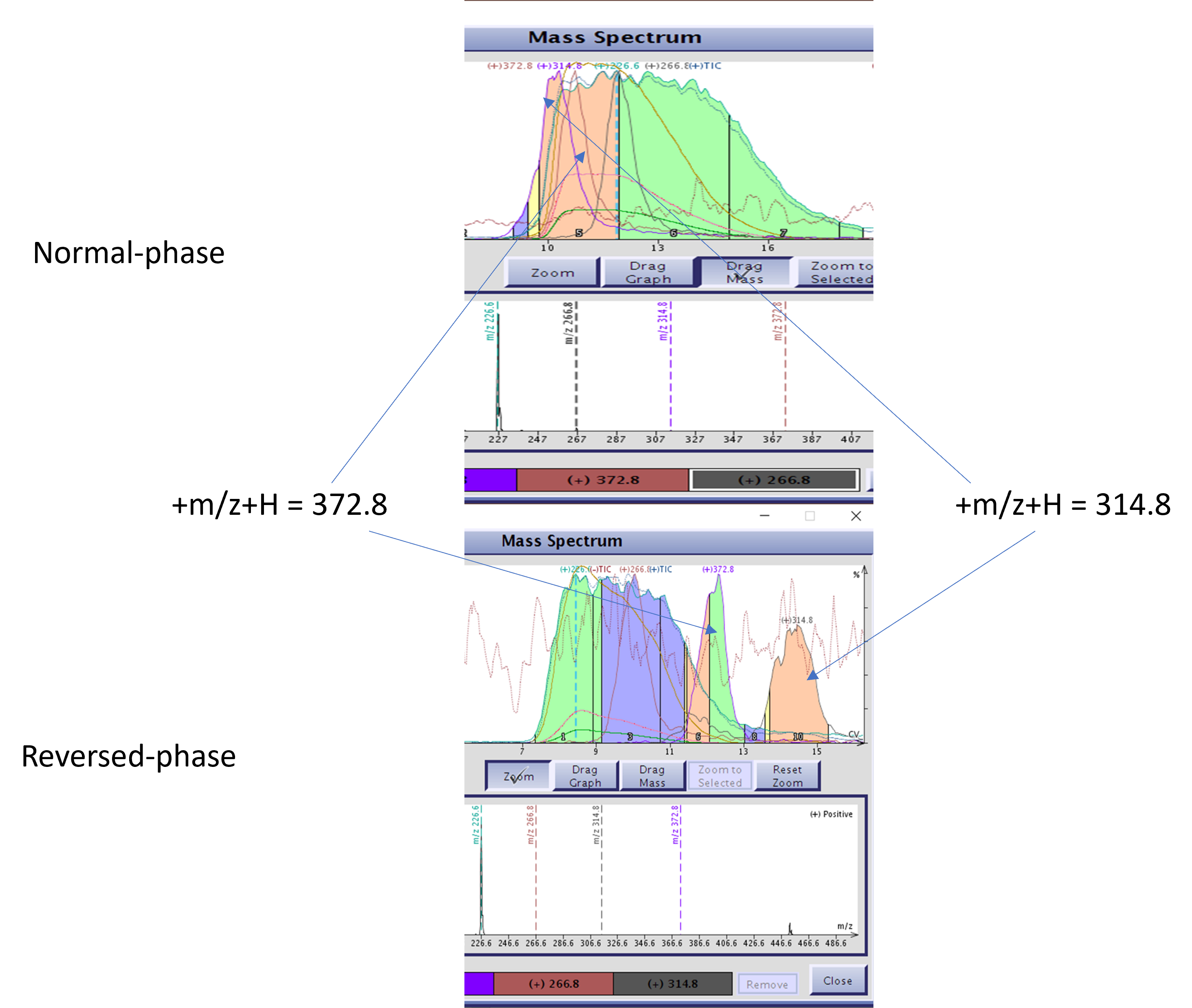Ensuring that the product of a reaction is pure is critical to that compound’s viability as a marketable entity. Impurities often require characterization if they are in excess of regulated limits. The isolation of these compounds can be quite challenging.
When a reaction mixture or natural product extract is purified by flash chromatography there are sometimes impurities found in the isolated target compound. This can often be attributed to selectivity challenges (compound-sorbent-solvent), column overload, or improper injection technique (too strong of a sample solvent).
While flash chromatography is a technique designed to remove the majority of reaction by-products from the reaction’s target compound, typically an intermediate, it is often used for final product purification. When a purified target compound’s analysis show the presence of co-eluting by-products, then the product requires re-processing, typically using chromatography, to clean it.
One of the most popular approaches to clean the product is orthogonal chromatography where a chromatographic parameter affecting selectivity is changed. This can be a change in column media, media brand, solvents, and/or temperature (Webster & Kott, 2020). These changes are considered orthogonal to the original purification method.
I have previously posted on the benefits taking an orthogonal approach to flash chromatography can provide. I will show some examples of how changing selectivity improves the flash chromatographic separation of some reaction mixtures and natural products.
Changing solvents
Normal-phase
A solvent change can have dramatic effects in both normal- and reversed-phase chromatography. In normal-phase, purification methods can be improved by selecting one or more solvents from different selectivity groups, Figure 1.

Figure 1. Normal-phase flash chromatography of a reaction with a single by-product using a DCM/MeOH gradient (top), a DCM/MeCN gradient (middle), and a hexane/EtOAc/IPA gradient (bottom). In each run one or more solvents from differing selectivity groups were used.
As seen in Figure 1, very different separations were obtained not only between DCM/MeOH (solvent groups V and II) and DCM/MeCN (solvent groups V and VI), but between those two and Hexane/EtOAc/IPA (solvent groups VI and II). With DCM/MeOH there was co-elution between the product and the by-product. By replacing MeOH (a protic solvent) with MeCN (an aprotic solvent), the by-product eluted earlier than the product, though not completely resolved. By replacing DCM with hexane and MeOH with a mix of EtOAc/IPA, the product is fully separated from the by-product.
Reversed-phase
Solvent selectivity also impacts reversed-phase separations. Differences in polarity and acidity play roles in both reversed-phase and normal-phase flash chromatography. In the example below, a change in organic solvent from MeOH to MeCN provided a partial separation of co-eluting terpenoid compounds, Figure 2.

Figure 2. Natural product purification using reversed-phase generated different results based on the solvents used. MeOH/H2O did not separate the two major components (top) but changing to MeCN/H2O provided at least a partial separation.
Changing media
Changing media, especially between normal- and reversed-phase methods, is a proven way to dramatically alter chromatographic selectivity. There are major differences in the surface polarity thus requiring different solvents and, therefore, providing different selectivity. A good example is shown in Figure 3 where a reaction mixture was purified first using normal-phase with a Biotage® Isolera Dalton 2000 that found several co-eluting by-products (+m/z+H 372.8 and 314.8) in the product peak (+m/z+H 226.6).

Figure 3. Orthogonal RxN purification comparison using normal-phase (top) and reversed-phase (bottom) using a Biotage® Isolera Dalton 2000. With normal-phase, by-products with masses 372.8 and 314.8 were detected in the front of the peak. Reversed-phase purification retained both by-products increasing the target compound's purity.
The product containing fractions were combined, dried, then re-purified using reversed-phase which successfully removed the two contaminants (372.8 and 314.8).
So, when you find that your purified product still has some contamination, consider re-purification using either different solvents or different media. A little bit more effort can provide much improved results.
Interested in learning more about flash chromatography? Check out some other blogs:

 Organic Workflow
Organic Workflow Peptide Workflow
Peptide Workflow Scale-Up Flash Purification
Scale-Up Flash Purification  Sample Preparation
Sample Preparation Biomolecule Purification
Biomolecule Purification Oligo synthesis
Oligo synthesis Scavengers and Reagents
Scavengers and Reagents Service & Support
Service & Support Accessories & Spare parts
Accessories & Spare parts Investors
Investors Reports & News
Reports & News The Share
The Share Corporate Governance
Corporate Governance Calendar
Calendar Sustainability
Sustainability Our Offering
Our Offering Our History
Our History Our Locations
Our Locations Leadership
Leadership
